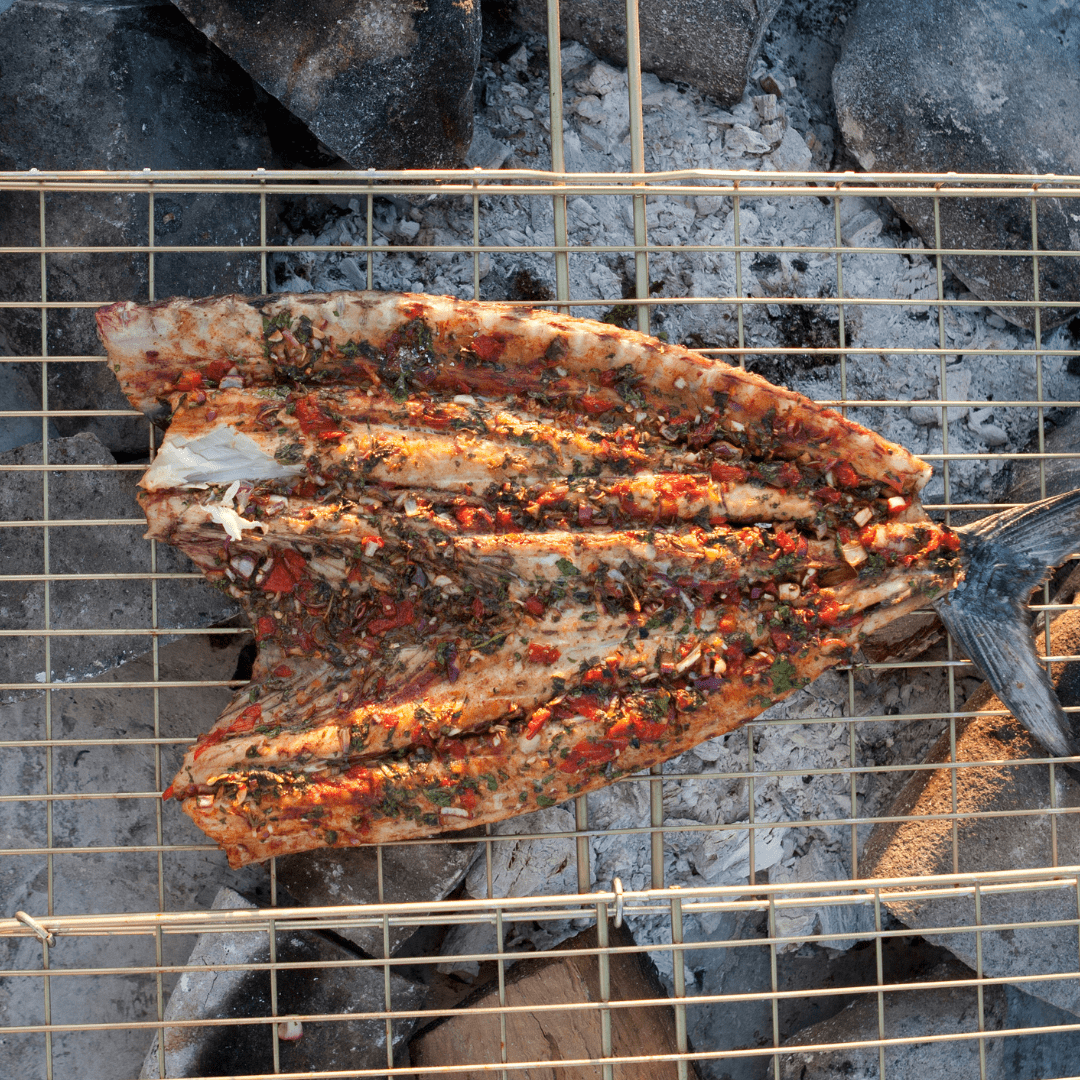Red Roman
QUICK FACTS
Nutrition Value: Protein, Calcium, Iron, Magnesium, Phosphorus, Sodium, Zinc, Copper, Manganese, Selenium, Vitamins A, B6, B12, D, Omega 3.
Ways to cook: Grill, Bake, Roast, Braai, Steam, Poach, Braise,
Portion Sizes: 150 – 200g
Taste: Red Ramon is moist and delicate, with a mild, slightly sweet nutty taste that goes well with all kinds of additional flavours. It is a very versatile fish and can be cooked in many different ways. The meat is lean with a firm texture.
Sides Suggestions:
- Oven Roasted Stuffed Red Roman Fish – Greek Style
- Baked Whole Herbed Red Roman with Sweet Potatoes & Onion
- Lemon Red Roman Fish with Herbed Butter
- Moroccan Inspired Red Roman Fish with Spicy Rice
- Pan Seared Red Ramon with Red Pepper Sauce
Similarities: Haddock, Monkfish, Sea-bass
To Drink with Red Roman: Dry Riesling, Chardonnay, Sauvignon Blanc, Pinot Gris
Best way to cook
Pan-frying: You can choose to fry your fish as is or cover it in flour or breadcrumbs. Using the extra coating will give your fish more texture and body. If you’re going to dip it in flour, soak the fish in a bowl of milk for 3 to 5 minutes, before covering it in flour or breadcrumbs. This will help the coating stick to the fish.
Get your pan ready for frying by pouring a few tablespoons of vegetable oil into it. You can also use clarified butter which will taste great on the fish. Heat the pan until the oil slides around easily. You can splatter a few drops of water in the pan – if the water sizzles, it’s ready for your fish. Place the fish flesh side down in the pan – the side you’ll be presenting to your diner (the non-skin side).
Once your fish is in the pan, slide a spatula gently underneath to prevent it from sticking. Cook the fish for 3 to 4 minutes on one side and then flip it. Fish usually cooks for 10 minutes per inch of thickness. Use a wide spatula to prevent breaking the fish. Cook for another 3-4 minutes or until the flesh turns pearly white and flakes easily with a fork. Carefully lift it out of the pan and serve immediately.
Baking whole in foil: This has a similar effect to steaming, sealing moisture within the foil rather than letting it escape into the oven. This method ensures that your fish doesn’t dry out and helps to seal in the aroma and flavour.
Preheat the oven to 200°C and grease a large piece of foil with butter. Take your fish and season it with salt and pepper. Place the fish onto the foil, add some herbs and lemon juice, fold the sides and seal at the top. Place into a preheated oven and cook for a specified time until the flesh is white and firm. If you’re baking a whole fish in foil, ensure that the fish is properly cleaned, scaled, and gutted before wrapping it in foil. Cooking a whole fish in foil will take much longer, perhaps around 40 – 50 minutes.







